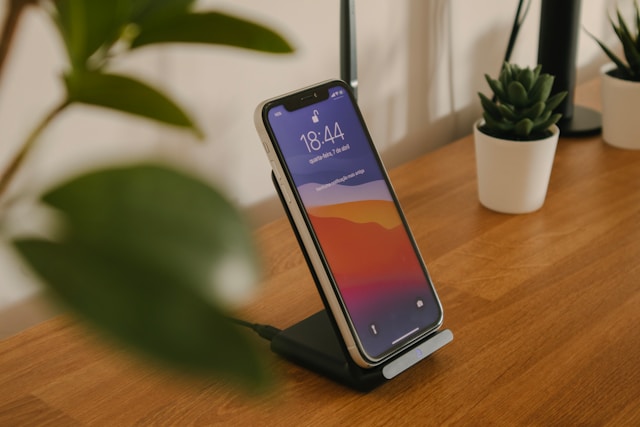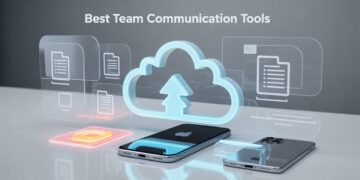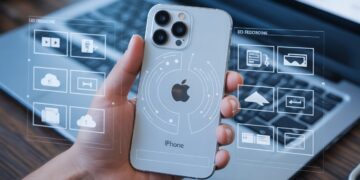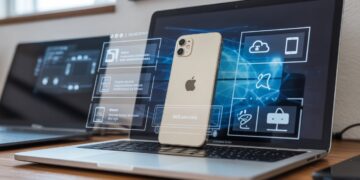iPhone battery life is a common concern for users who rely on their devices for work, entertainment, and communication. Over time, battery performance can decline due to software updates, heavy usage, and inefficient settings. Fortunately, there are several ways to extend iPhone battery life and ensure your device lasts longer throughout the day. In this guide, we’ll explore practical tips to improve battery performance and maintain its health over time.
Optimize iPhone Settings for Battery Life
Enable Low Power Mode
One of the easiest ways to save battery life on iPhone is by enabling Low Power Mode. This feature reduces background activity, disables mail fetch, and lowers screen brightness to conserve energy. You can activate it manually in Settings > Battery > Low Power Mode or through the Control Center.
Adjust Screen Brightness and Auto-Lock
The iPhone’s display is one of the biggest battery drains. To extend battery life, reduce screen brightness manually or enable Auto-Brightness in Settings > Accessibility > Display & Text Size. Additionally, set a shorter Auto-Lock duration (e.g., 30 seconds) to prevent the screen from staying on unnecessarily.
Turn Off Background App Refresh
Apps running in the background can consume battery power even when not in use. To limit this, go to Settings > General > Background App Refresh and either disable it entirely or select specific apps that don’t need constant updates.
Manage Location Services and System Services
GPS and location tracking can quickly drain battery life. Navigate to Settings > Privacy & Security > Location Services and disable unnecessary location tracking for apps that don’t require it. Also, under System Services, turn off features like Location-Based Ads and Significant Locations to save power.
Manage Apps and Usage
Identify Battery-Draining Apps
iOS provides a built-in Battery Usage report to help identify which apps consume the most power. Go to Settings > Battery, and review the battery usage by app. If an app is using excessive power, consider limiting its usage or deleting it if unnecessary.
Close Unnecessary Apps Running in the Background
Although iOS efficiently manages background processes, closing apps that consume excessive resources can sometimes help improve battery life. Swipe up from the bottom of the screen (or double-press the home button on older models) and close apps you’re not using.
Use Wi-Fi Instead of Cellular Data
Using cellular data, especially in areas with weak signals, can drain the battery quickly. Whenever possible, connect to a Wi-Fi network to reduce power consumption. If you’re not using the internet, enable Airplane Mode to save energy.
Reduce Power-Draining Features
Disable Unnecessary Notifications
Frequent notifications with vibrations and sounds can reduce battery life. To manage notifications, go to Settings > Notifications, and disable alerts for apps that don’t require immediate attention.
Turn Off Bluetooth and AirDrop When Not in Use
Leaving Bluetooth and AirDrop on unnecessarily can drain your iPhone’s battery. When not in use, disable these features in the Control Center or under Settings > Bluetooth and Settings > General > AirDrop.
Use Dark Mode for OLED-Screen iPhones
If you own an iPhone with an OLED display (such as iPhone 12, 13, or 14), using Dark Mode can help save battery life. To enable it, go to Settings > Display & Brightness and select Dark Mode. OLED screens consume less power when displaying darker colors.
Battery Charging Best Practices
Avoid Extreme Temperatures While Charging
Charging your iPhone in very hot or cold conditions can degrade battery health over time. Keep your device in a room-temperature environment for optimal performance.
Use Apple-Certified Chargers and Cables
Always use an Apple-certified charger (MFi-certified) to avoid potential battery damage. Cheap, non-certified chargers can lead to overheating and reduce battery lifespan.
Avoid Charging to 100% Frequently
Keeping your battery between 20-80% charge can help maintain long-term battery health. Avoid overnight charging, and unplug your device once it reaches around 80-90% to reduce wear on the battery.
Advanced Tips for Prolonging Battery Lifespan
Update iOS for Battery Optimizations
Apple frequently releases iOS updates with battery optimizations and bug fixes. To check for updates, go to Settings > General > Software Update and install the latest version.
Calibrate the Battery Occasionally
To ensure accurate battery readings, occasionally allow your iPhone’s battery to drain completely and then charge it to 100%. This helps recalibrate the battery meter.
Replace the Battery If It Significantly Degrades
If your battery health drops below 80%, you may notice a decline in performance. Check your battery health under Settings > Battery > Battery Health & Charging. If necessary, visit an Apple Store or an authorized repair center for a battery replacement.
Conclusion
Maximizing iPhone battery life is essential for getting the most out of your device. By optimizing settings, managing apps, and following best charging practices, you can extend your battery’s lifespan and improve daily performance. Keep an eye on Battery Health, stay updated with the latest iOS versions, and implement these habits to ensure your iPhone stays powered longer.









